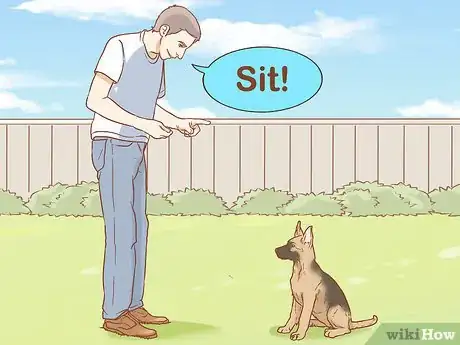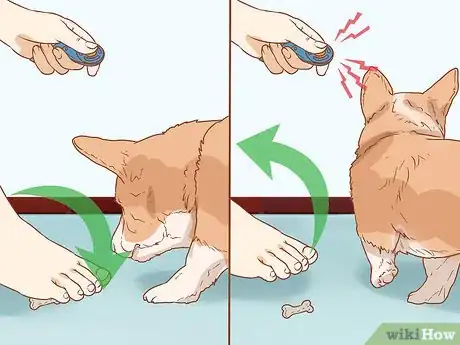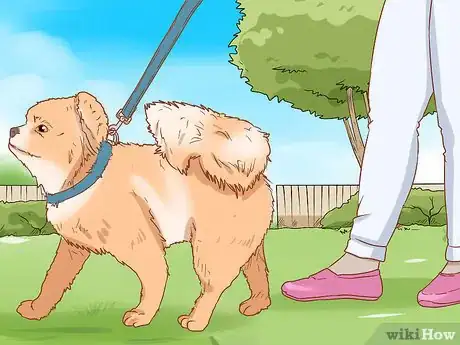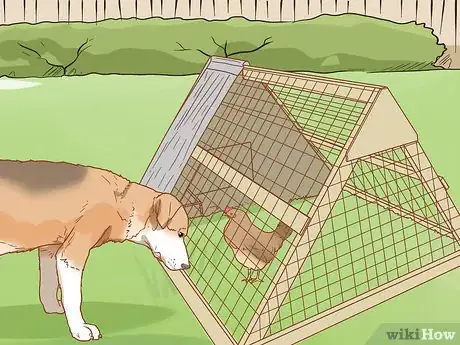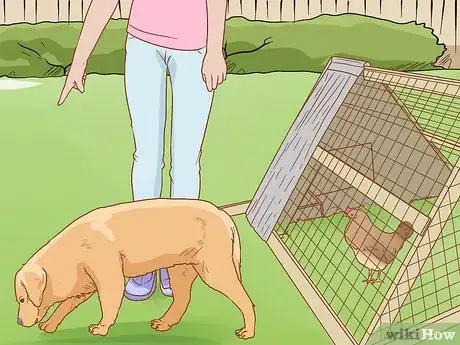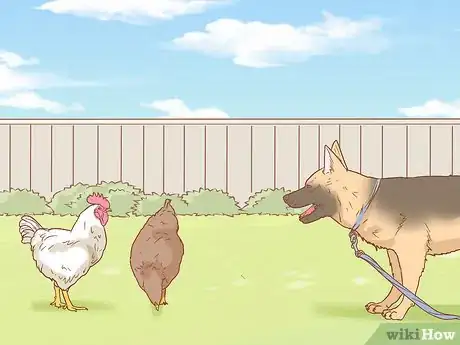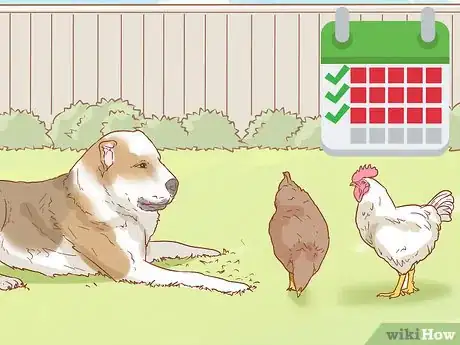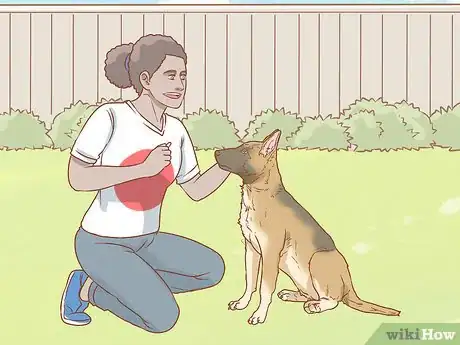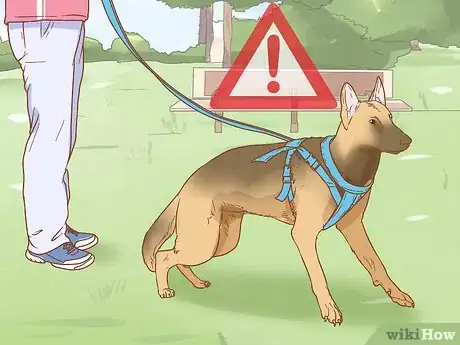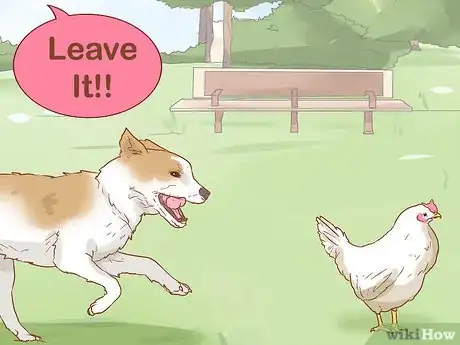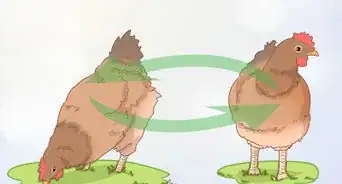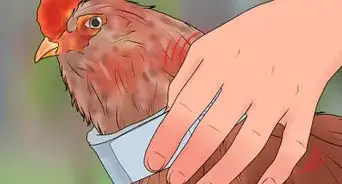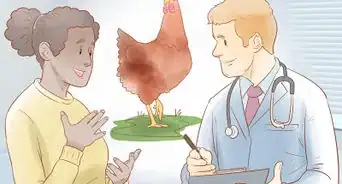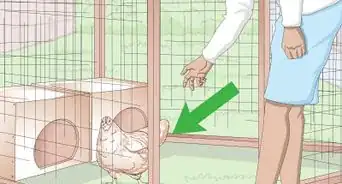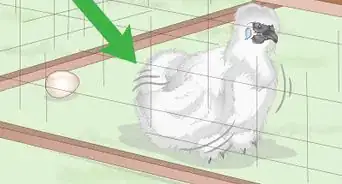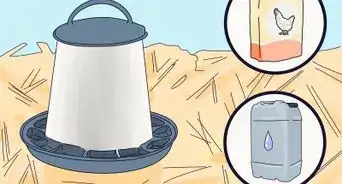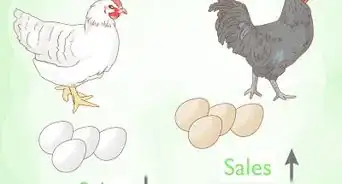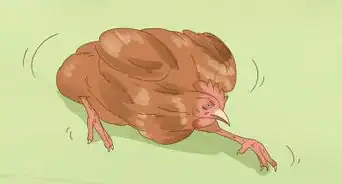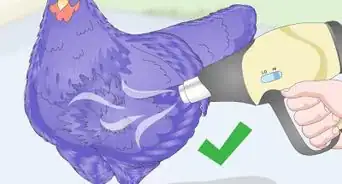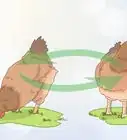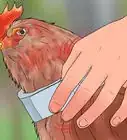This article was co-authored by Brian Bourquin, DVM and by wikiHow staff writer, Hunter Rising. Brian Bourquin, better known as “Dr. B” to his clients, is a Veterinarian and the Owner of Boston Veterinary Clinic, a pet health care and veterinary clinic with three locations, South End/Bay Village, the Seaport, and Brookline, Massachusetts. Boston Veterinary Clinic specializes in primary veterinary care, including wellness and preventative care, sick and emergency care, soft-tissue surgery, dentistry. The clinic also provides specialty services in behavior, nutrition, and alternative pain management therapies using acupuncture, and therapeutic laser treatments. Boston Veterinary Clinic is an AAHA (American Animal Hospital Association) accredited hospital and Boston’s first Fear Free Certified Clinic. Brian has over 19 years of veterinary experience and earned his Doctor of Veterinary Medicine from Cornell University.
There are 12 references cited in this article, which can be found at the bottom of the page.
This article has been viewed 28,064 times.
If you’re keeping dogs and chickens in your yard or home, your dog’s natural instincts may kick in to hunt its prey. If your dog starts chasing or going after your chickens, you can take a few weeks to train it so it behaves. By teaching your dog simple commands, slowly introducing your animals, and supervising them together, you can get most dogs tame around your birds!
Steps
Teaching Your Dog Basic Commands
-
1Teach your dog the “sit” and “stay” commands so it doesn’t chase your chickens. Offer your dog a treat, but don’t give it a treat until it sits on the ground. Repeat this a few times with a treat so your dog associates the command with a reward. Then, show your dog the treat but don’t give it to your dog until it sits. Start using the words “sit” and “stay” and make your dog wait for a few seconds so it stays in place.[1]
- Dogs are easiest to train when they are puppies. An older dog may not be receptive to the training.
- Teaching your dog to sit and stay will keep it close to you and away from your chickens.
-
2Use “leave it” when your dog is interested in something it shouldn’t be. Keep a treat under your foot so your dog can’t reach it. Let the dog sniff and paw at your foot until it gets bored. When your dog leaves, tell it that it’s being good and give it a treat from your hand. Keep doing this, but use the words “leave it” when the dog first notices the treat. Keep working on your training until your dog avoids going after the treat.[2]
- Never yell or shout at your dog since the loud noise could frighten it.
- If your dog knows the “leave it” command, you can tell it to not bother your chickens.
Advertisement -
3Teach your dog “settle down” when it needs to stay calm. When your dog is laying on the ground and staying calm, tell it to settle down. Reward your dog when it stays quiet and in place for at least 1 minute. Each time you see it lay down and stay calm, repeat the command and give it a treat so you establish the behavior. When your dog starts being energetic, tell it to settle so it lays down.[3]
- The “settle down” command is useful if your dog starts getting energetic or chases your chickens.
- Use a mat or a small rug as a place for your dog to go when you tell it to settle down.
Introducing Your Dog to the Chickens
-
1Exercise your dog before introducing it to your chickens. Taking your dog for a long walk or doing vigorous exercises throughout the day helps your dog stay calm while you expose it to your chickens. Pick a time when your dog is more exhausted and less likely to jump or get excited.[4]
-
2Keep a see-through barrier between your dog and chickens. Keep your chickens in their cage or their brooder the first time you introduce your dog to them. Check that your chickens are still acting natural while your dog is around. Make sure your dog can see the chickens inside the cage so it can watch them. This helps your dog and chickens get used to one another’s movements and appearance. Keep your dog near the cage for 3-5 minutes at a time.[5]
- Pet your dog while it's watching your chickens so it stays calm.
-
3Scold your dog if it tries to paw or jump at the barrier. When your dog attempts to get at your chickens, use a stern voice and tell it “leave it” or “settle down.” If your dog attempts to do it again, take it away for a few minutes before returning to your chicken cage. Keep your dog slightly farther away so it doesn’t behave badly again.[6]
- Never hit or yell at your dog if it is misbehaving.
- If your dog is more excitable, take it away from the chicken cage for at least 10 minutes so it can calm down.
-
4Increase the time your dog spends around your chickens over 1 week. Try to spread 4-5 sessions with your dog and chickens throughout the day so they have time to get exposed to one another. As your dog gets more comfortable, increase the session times to 10 minutes. Continue the sessions for the rest of the week.[7]
- Use shorter session times if your dog is easily excitable.
- If your dog still isn’t acting calm around your chickens by the end of the week, keep your chickens in their cage for at least another week or until the dog starts to relax.
-
5Let the chickens roam near your dog while it’s on a leash for 1-2 weeks. Take the chickens out of their cage or brooder and keep them within arm’s reach. Hold your dog on a leash so it can’t run at the chickens. Tell your dog to “sit” or “lie down” before letting the chickens loose near it. If your dog lunges for the chickens, keep the leash firm and say “leave it” to prevent bad behavior.[8]
- If your dog is a puppy, it may take longer to train and associate commands.
Tip: If you’re raising chicks, keep them on your lap with your dog next to you. That way, you can block the chick with your hands if your dog tries to attack.
Supervising Your Dog and Chickens
-
1Supervise your dog around your chickens while its off of a leash for 3-4 weeks. After your dog acts calm when the chickens are out of the cage, take the dog off of its lead so it can interact freely with the chickens. Stay within 5–10 ft (1.5–3.0 m) of your dog so you can stop it if it starts chasing your chickens. Give your dog 10-15 minutes each day with your chickens out of their coop.[9]
- Be ready to stop your dog if it starts running or attacking.
-
2
-
3Watch for signs that your dog is going to attack. If your dog starts intensely staring at your chickens and has dilated pupils, it might be getting ready to attack. You may also notice that your dog’s body is tense or has the hairs on its back standing up. If you notice this, put your dog on its leash, tell it to “settle down,” and separate it from the chickens.[12]
- Other signs may include ignoring commands, twitching lips, or crouching near your chickens.
-
4Discipline your dog if it starts to chase or nip at your chickens. If your dog does get too excited around your chickens, it may pounce or try to chase them. Use a firm voice and tell it “no” and “leave it” so it knows that it’s being bad. Tell your dog to lie down or stay near you for a short time before letting it run freely again.
- If your dog doesn’t stay calm, you may need to find a professional trainer.
Warning: Not all dogs, especially those bred for hunting and retrieving birds, can be trained to stay calm around chickens.
Warnings
- Never yell at or hit your dog if it disobeys your commands.⧼thumbs_response⧽
- Not all dog breeds will stay calm around chickens.⧼thumbs_response⧽
- Don’t leave your dog alone with your chickens for a long period of time since its instincts might kick back in without supervision.⧼thumbs_response⧽
References
- ↑ https://youtu.be/DPNz6reMVXY?t=159
- ↑ https://www.rover.com/blog/teaching-your-dog-a-super-strength-leave-it-command/
- ↑ https://dogtime.com/dog-health/general/1544-dog-training-settle-down-dunbar
- ↑ https://youtu.be/FDJlSDgRww4?t=42
- ↑ https://youtu.be/FDJlSDgRww4?t=21
- ↑ https://youtu.be/FDJlSDgRww4?t=57
- ↑ https://youtu.be/FDJlSDgRww4?t=12
- ↑ http://www.waldeneffect.org/blog/How_to_introduce_your_dog_to_chickens/
- ↑ http://www.scoopfromthecoop.com/keeping-dogs-chickens/
- ↑ Brian Bourquin, DVM. Veterinarian. Expert Interview. 20 December 2019.
- ↑ https://youtu.be/285mNDiszX8?t=26
- ↑ http://www.scoopfromthecoop.com/keeping-dogs-chickens/
- ↑ https://youtu.be/FDJlSDgRww4?t=7
About This Article
If you need to train your dog to leave chickens alone, start by teaching it basic commands like "sit," "stay," "leave it," and "settle down." Next, keep your chickens in a cage or brooder and introduce your dog to them for a few minutes several times a day. As your dog gets more comfortable, increase the time for each session. Then, put your dog on a leash and let the chickens roam free, continuing the short sessions for 1-2 weeks. Gradually allow your dog off the leash under supervision. For tips on using rewards like treats during training sessions, read on!
